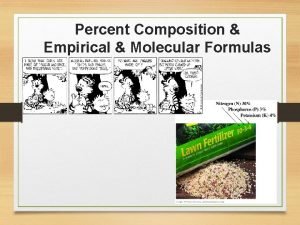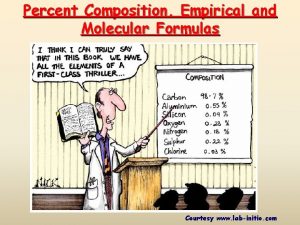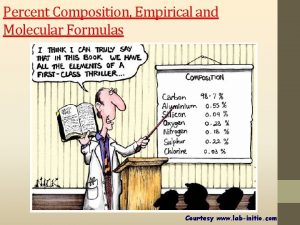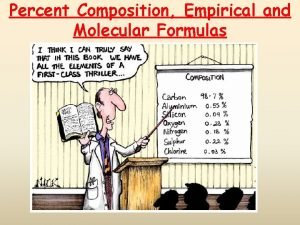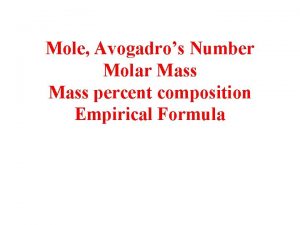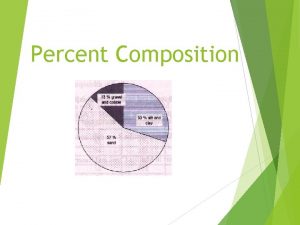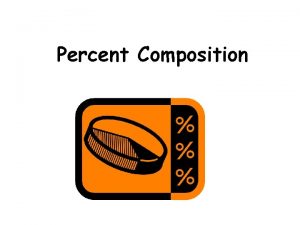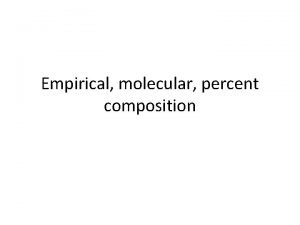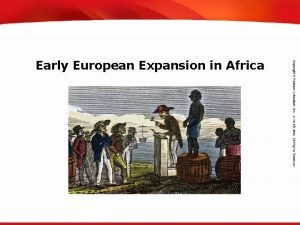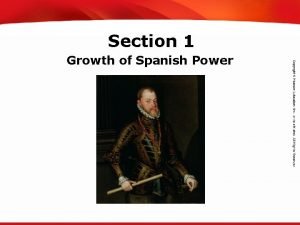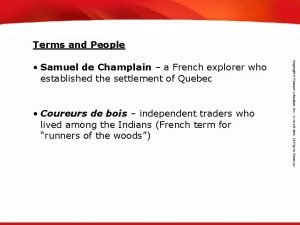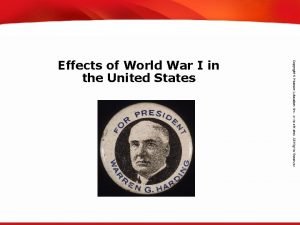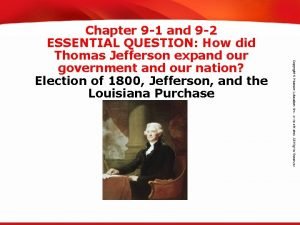TEKS 8 C Calculate percent composition and empirical















- Slides: 15

TEKS 8 C: Calculate percent composition and empirical and molecular formulas. Gilded Age Economics, Politics and Populism

TEKS 8 C: Calculate percent composition and empirical and molecular formulas. Between 1877 and 1897, party loyalties were evenly divided. • Neither political party achieved control of both the White House and Congress for more than two years in a row. • Presidents during the Gilded Age were elected only by slim margins. • This made it difficult to pass new laws.

TEKS 8 C: Calculate percent composition and empirical and molecular formulas. Corruption plagued national politics as many officials accepted bribes. Cartoonists such as Thomas Nast worked to expose corruption. Thomas Keppler’s “The Bosses of the Senate”

TEKS 8 C: Calculate percent composition and empirical and molecular formulas. The spoils system was the glue of the political parties. The spoils system, in which party supporters received government jobs regardless of their qualifications, shifted power to a few. This system made the political parties extremely powerful.

TEKS 8 C: Calculate percent composition and empirical and molecular formulas. A movement arose to promote civil service reform. Ending the spoils system was difficult. Change finally happened, in part, because President James Garfield was assassinated by a man who believed the Republican Party owed him a job.

TEKS 8 C: Calculate percent composition and empirical and molecular formulas. Chester A. Arthur became President and supported civil service reform. In 1883, he signed into law the Pendleton Civil Service Act, which established a merit-based system for government employment.

TEKS 8 C: Calculate percent composition and empirical and molecular formulas. Populism

TEKS 8 C: Calculate percent composition and empirical and molecular formulas. People moving to the West and South in the late 1800 s knew that their lives would not be easy. Problems facing the farmers of the West and South low prices for crops high transportation, equipment, and loan costs drought reduced influence in politics They did not anticipate the many problems that made survival nearly impossible.

TEKS 8 C: Calculate percent composition and empirical and molecular formulas. Frustrated by these problems, farmers began to organize.

TEKS 8 C: Calculate percent composition and empirical and molecular formulas. The spread of the Farmers’ Alliances led to the formation of the Populist Party in 1892. The Populist platform warned about the dangers of political corruption, an inadequate money supply, and an unresponsive government. They called for: coinage of silver an income tax government ownership of railroads bank regulations

TEKS 8 C: Calculate percent composition and empirical and molecular formulas. The Populists did well in 1892, electing three governors, five senators, and ten congressmen.

TEKS 8 C: Calculate percent composition and empirical and molecular formulas. An economic depression began in 1893, and labor unrest and violence broke out. The Populist Party grew. In 1896, a young lawyer named William Jennings Bryan spoke at the national Democratic convention. The speech, with its Populist message of “free silver, ” moved Democrats to nominate Bryan. The Populist Party chose to give him their support.

TEKS 8 C: Calculate percent composition and empirical and molecular formulas. William Jennings Bryan campaigned against Republican candidate William Mc. Kinley in a way that had never been seen before. He toured the country, talking directly to voters.

TEKS 8 C: Calculate percent composition and empirical and molecular formulas. Mc. Kinley won against Bryan in 1896 and in 1900.

TEKS 8 C: Calculate percent composition and empirical and molecular formulas. The Populist Party was weakened by supporting William Jennings Bryan on the Democratic ticket. It survived another decade, but its viability as an alternative to the two major parties was over. Many of the reforms sought by the Populists eventually became reality. The new campaigning style used by Bryan became the norm.
 Empirical formula with percentages
Empirical formula with percentages Empirical formula of lactic acid
Empirical formula of lactic acid How to find molecular formula
How to find molecular formula Water percentage composition
Water percentage composition Empirical formula to percent composition
Empirical formula to percent composition How to calculate empirical formula using percentages
How to calculate empirical formula using percentages How to find empirical formula from percentages
How to find empirical formula from percentages Finding empirical formula from percent composition
Finding empirical formula from percent composition How to calculate percent composition by mass
How to calculate percent composition by mass Percentage composition
Percentage composition Percent composition examples
Percent composition examples How to calculate valid percent
How to calculate valid percent Percent composition bubble gum lab answer key
Percent composition bubble gum lab answer key Percent composition by mass
Percent composition by mass Percent composition definition
Percent composition definition Mass percent formula
Mass percent formula

